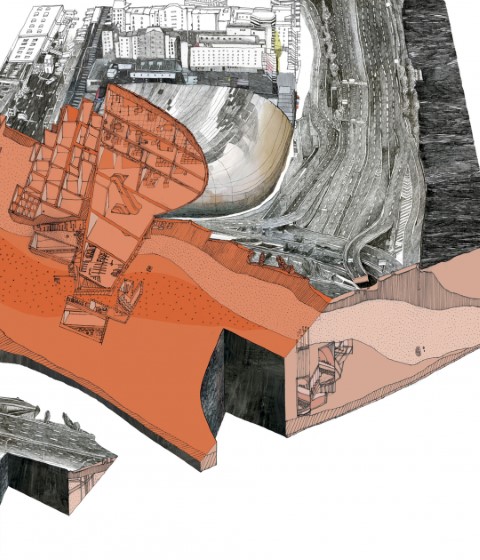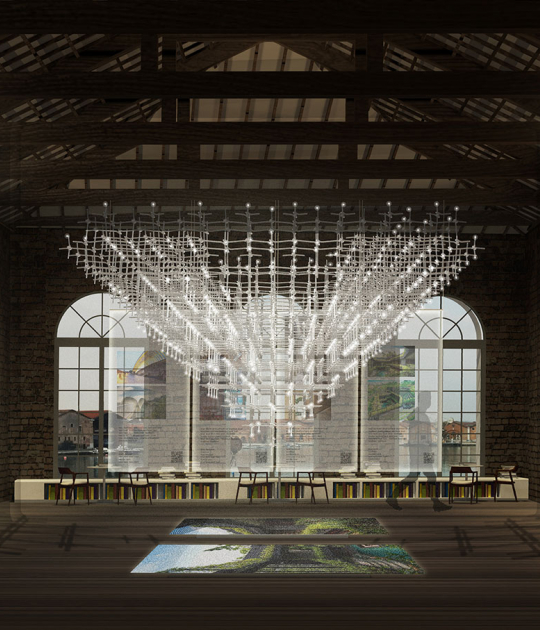Thoughts Form Matter gives rise to spatial metaphors. Concepts such as “deviation”, “atmosphere” and “beauty“ become tangible in the three-part, converging spatial installation. The three teams interpret the general subject of the Biennale Architettura 2018 “Freespace” as both a spatial and a spiritual construct, as a complex dynamic system and as a versatile realm which is shaped by coexistence.
Description of project by Verena Konrad
The Austrian contribution to Biennale Architettura 2018 is a plea for an approach to design that understands itself as the formulation of ideas. Architecture as a cultural activity is based on content rather than the physical realisation of functional diagrams: content that is a vision of living together and the ability to question and reinvent existing rules. This search for continuous contextual reinvention enables things of importance to emerge. Large and small. In relationship with the existing. Things that look back upon and forwards to all that we can imagine.
Today, architecture is a broad field with links to many other disciplines. The complexity of the requirements facing today’s architects and designers means that permanent, intellectual reassurance is required if architecture and design are not to dwindle to pragmatism or merge into a neoliberal logic that is dominated by moments of rationalisation and a search for efficiency in which architecture finds its niche as a servant of an aesthetic economy. Designers need theories, concepts, a formulated approach in order to be able to critically reflect upon the political, social and cultural implications of their own actions.
LAAC, Henke Schreieck and Sagmeister & Walsh describe their work as an abstract thought-process that seeks a concrete form in which aesthetic, function and construction are in equilibrium. The basis of this is always an analysis of the task in its widest social context and of the production conditions which are equally part of this cultural setting.
The contribution “Thoughts Form Matter” draws attention to this complexity. To this end, the three invited teams have addressed the spatial and the historic context of La Biennale di Venezia, the general subject of “Freespace”, the location and its references, La Biennale di Venezia as a significant institution and the pavilion as a setting to which visitors also respond.
In three installations, which overlap and interact both spatially and contentually, LAAC, Henke Schreieck and Sagmeister & Walsh approach the principle of architecture and design as the creation of a new context and as a relational dimension. Thereby we interpret “Freespace” as a spatial and spiritual construct, a complex dynamic system, a versatile realm, characterised by coexistence. Three spatial installations, which partly merge into each other, materialise and visualise concepts such as “deviation”, “atmosphere” and “beauty“ as formulations of this set of ideas that invites visitors to position themselves as actors in this structure and to adopt their own approach.












































